Issue:
November 2023
Japan’s urban tram networks are barriers to the institutional vandalism inflicted on other cities
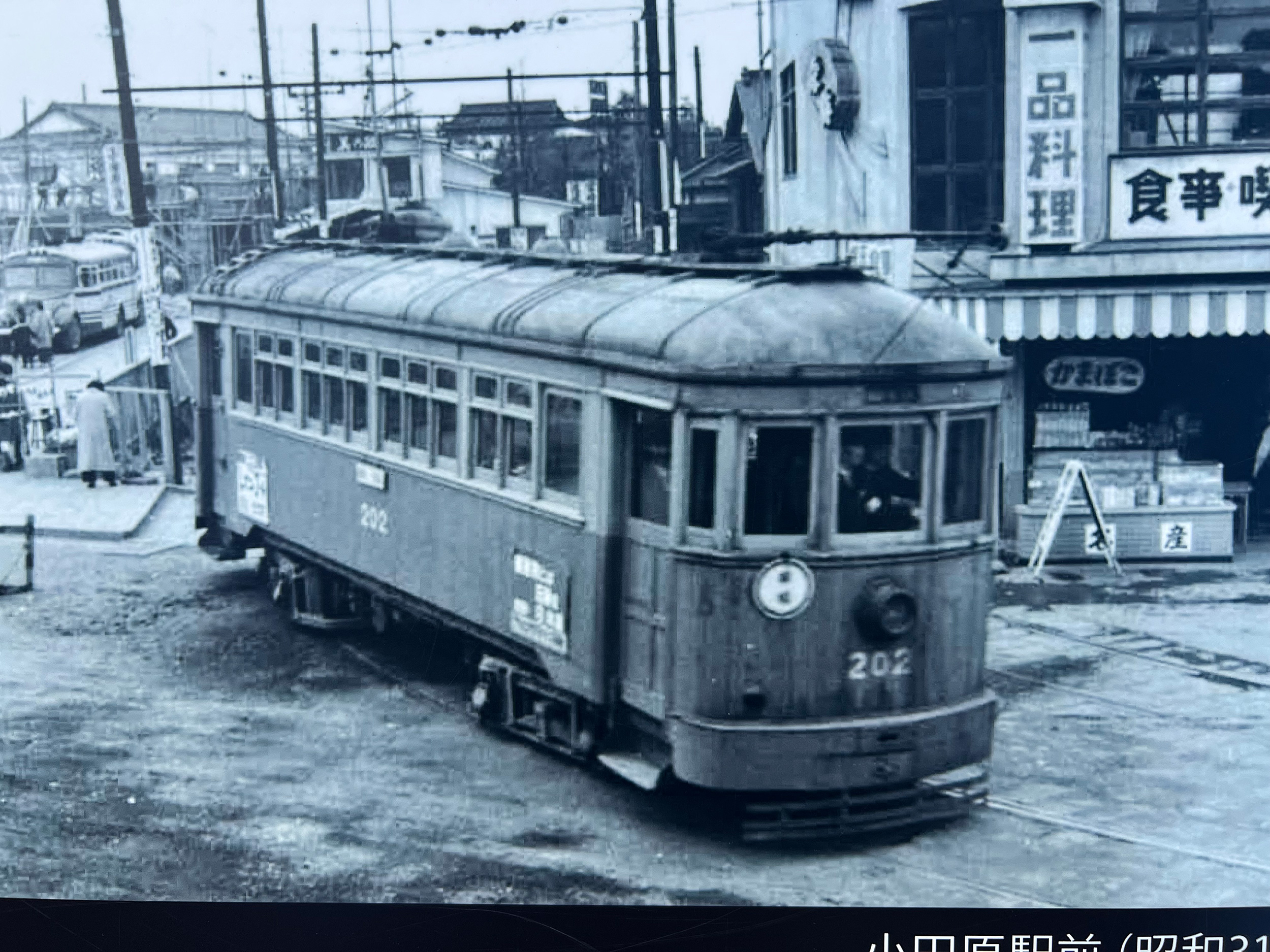
Casting my mind back in time, I realize I’m old enough to recall the last gasp of the steam locomotive, but seem to have missed out on the age of the streetcar, though I vaguely recall boarding one on the Blackpool seafront, a working-class resort in northwest England.
More verifiable are the events of this past summer, when I found myself standing on the pavement of a busy intersection in the city of Okayama, gazing at a spider’s web of overhead electric cables and an equally complex pattern of streetcar tracks. Watching a succession of passing vehicles, I realize that the audio experience of trams is as key as the visual one. You can tell the difference between the newer streetcars, gliding past almost silently like streamlined limousines, and the older designs, lumbering along to the soundtrack of their own mechanical anatomy. With these more expressive, steel-plated vehicles, you can feel their pressures and tensions, the real-time gravity of motion, as they clank and hiss over the tracks, the sound of brakes like a sword blade passing over a whetstone.
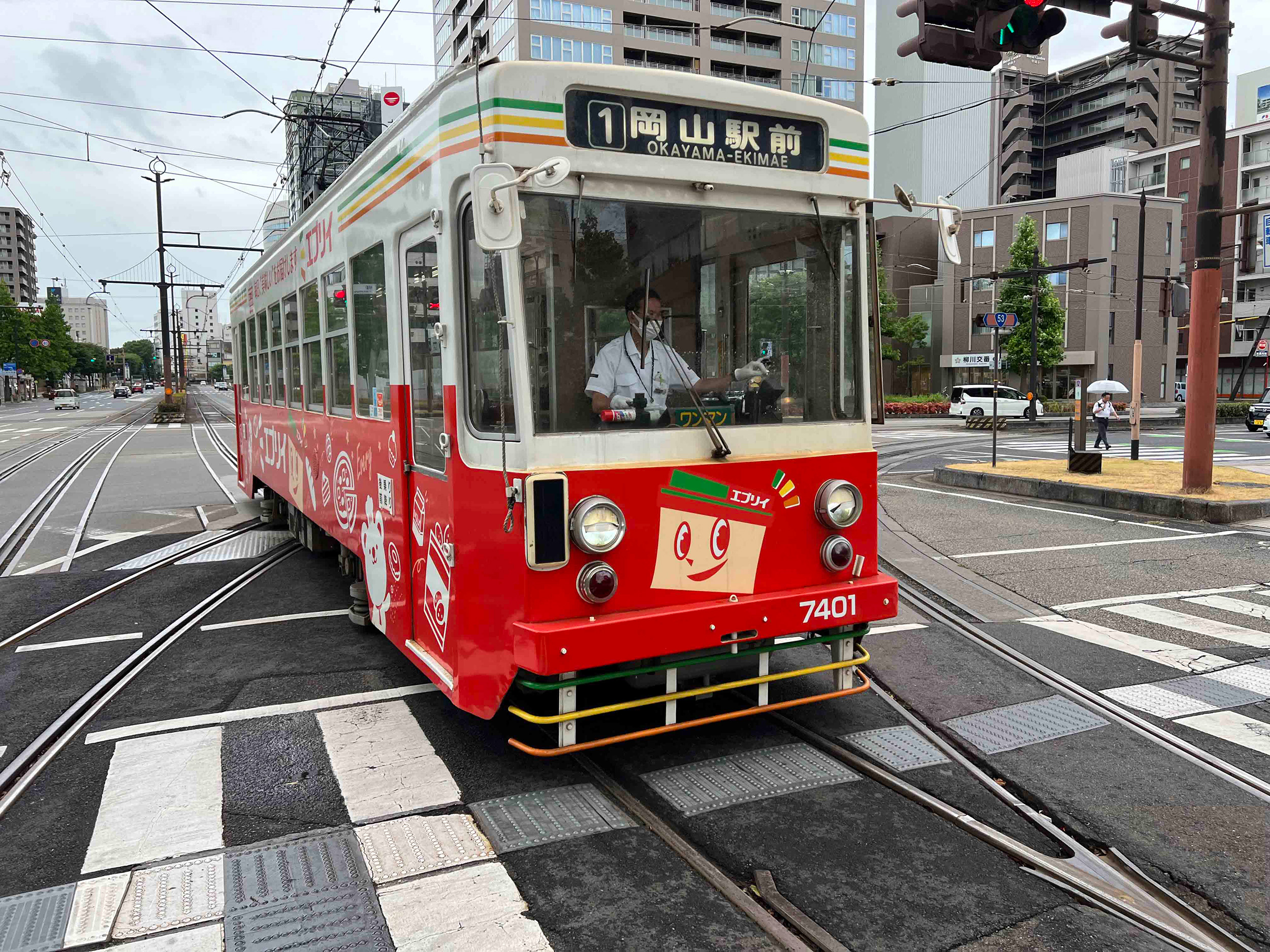
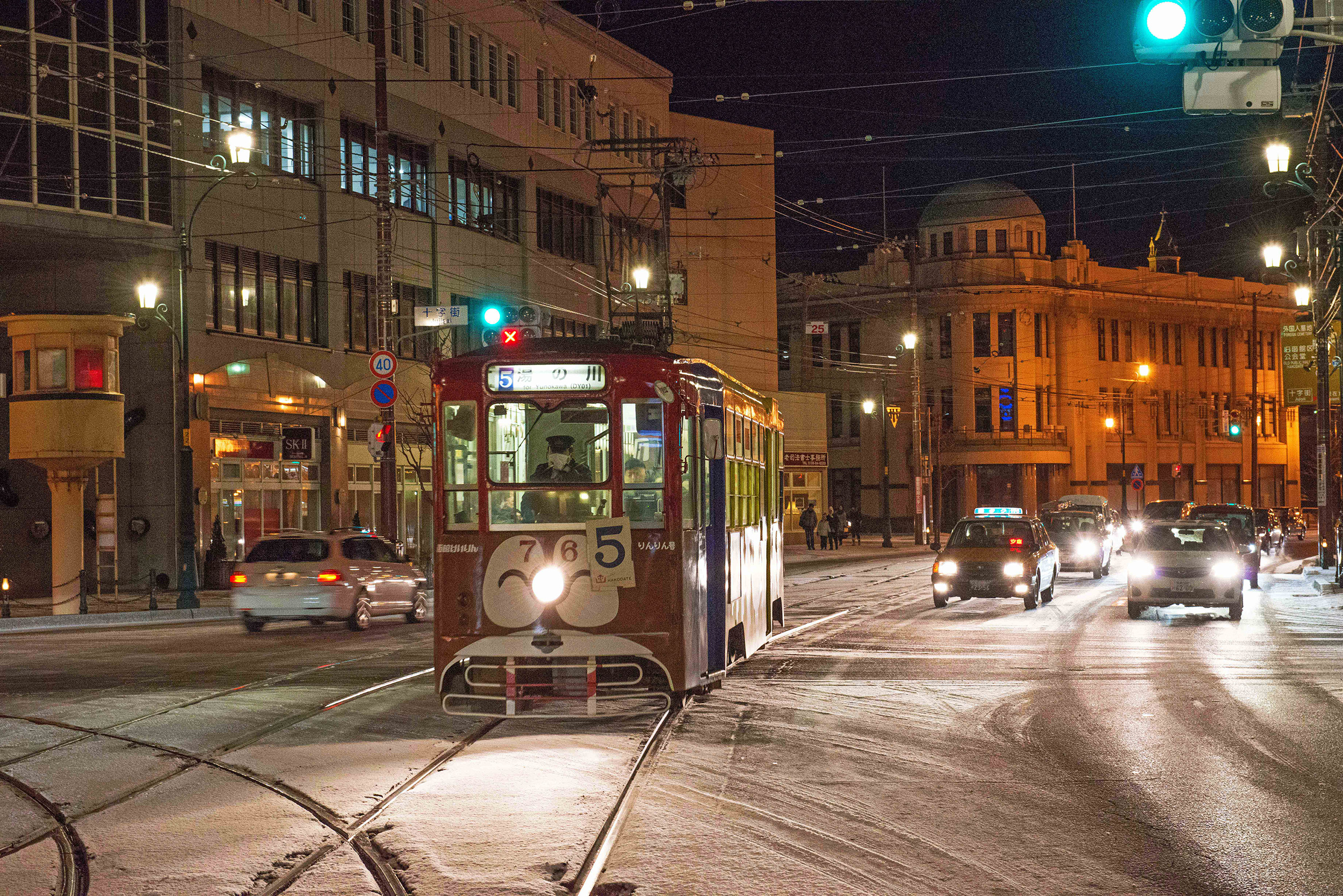
Trams have been a fixture in Japanese for over a century, though many cities have been scraped their systems to free up space for motorized traffic. I’ve seen, and eagerly boarded, streetcars in cities as different from each other as Hakodate, Kochi, Matsuyama, Toyohashi, Osaka, Hiroshima, Nagasaki, Kumamoto, and Kagoshima. There is even a short track remaining in Kyoto, the Randen Tram, running from Shijo Omiya in the center of the city out to Arashiyama. Tramcars are still known by their old names, romen-densha, and the pleasingly onomatopoeic chin-chin-densha, a fusion of words suggestive of the sound made by the vehicle’s starting bell.
One city where trams have not fared well is Tokyo. The Toden Arakawa Line and the Setagaya Line, the latter a largely modern system, are the only remaining ones in operation. Partaking of other peoples’ nostalgia for an age when trams were an essential part of the Tokyo transportation grid, I have an image from the collection of the late writer Donald Richie. In the photo, taken in 1947 at the Hibiya Crossing, opposite the inner moat of the Imperial Palace, we see a nest of overhead cables, beneath which a U.S. military policeman is conducting traffic alongside his Japanese counterpart. Only a couple of years before the picture was taken, trams passing the Imperial Palace were obliged to stop to allow passengers to bow in the direction of the emperor, then a divine ruler.
When I first arrived in Japan, I recall picking up an old copy of Jean Pearce’s Foot-Loose in Tokyo, a guide to the stations of the Yamanote loop line. A very personal, partly anecdotal book, Pearce recalls the curious phenomena of streetcar parties on the Toden Arakawa Line. These were introduced by well-heeled Americans during the Occupation period. It was, apparently, quite common during those brief few years, for a group of friends to rent an entire tramcar for a private party. In the spirit of a moveable feast, the vehicle would be decorated with flowers, a bar set up at one end of the carriage, and a trellis table provided for catering purposes. A noisy, joyous affair, it’s anybody’s guess what locals observing this spectacle, thought. The first edition of the book appeared in 1976. The author, referring to the only two tram car systems left in the capital, comments, “they may be gone by the time you read this.” Almost a half century later, the two lines are alive and well, supported by locals and tourists alike.
More akin to a river than a transport route in the way it fashions its sinuous course through central and eastern parts of the city, the line takes in parts of Shinjuku, Toshima, and Arakawa wards, providing convenient access to city sights within walking distance of stations. Those who know the line well claim that the most interesting stretch lies between Koshinzuka and Higashi-Ikebukuro, the backyard of old plebeian districts. One of the joys of the tram is that it trundles along slowly enough, and close enough to the houses, cubby shops, alleys and pathways contiguous with its serpentine progress, to catch a considerable amount of the minutiae of daily life. Despite passing through one of the city’s most cramped quarters, the building of the line has actually preserved space, removing in effect, one light-impeding wall from the houses that stand huddled beside it. Residents have been quick to take advantage of this open corridor of sunlight. Look closely and you will see south-facing persimmons, loquats, and modest trellises of vine and kiwi. Random beds of earth at the side of the line, narrow and pinched, have been sown with gladiola, lupine and clumps of herbaceous growth, or simply left to run riot with wild grasses and weeds. Many residents have requisitioned the far side of the paths opposite their front gates for their potted plants, and the low, protective fencing beside the tracks as climbing frames for ivy or sweet peas.
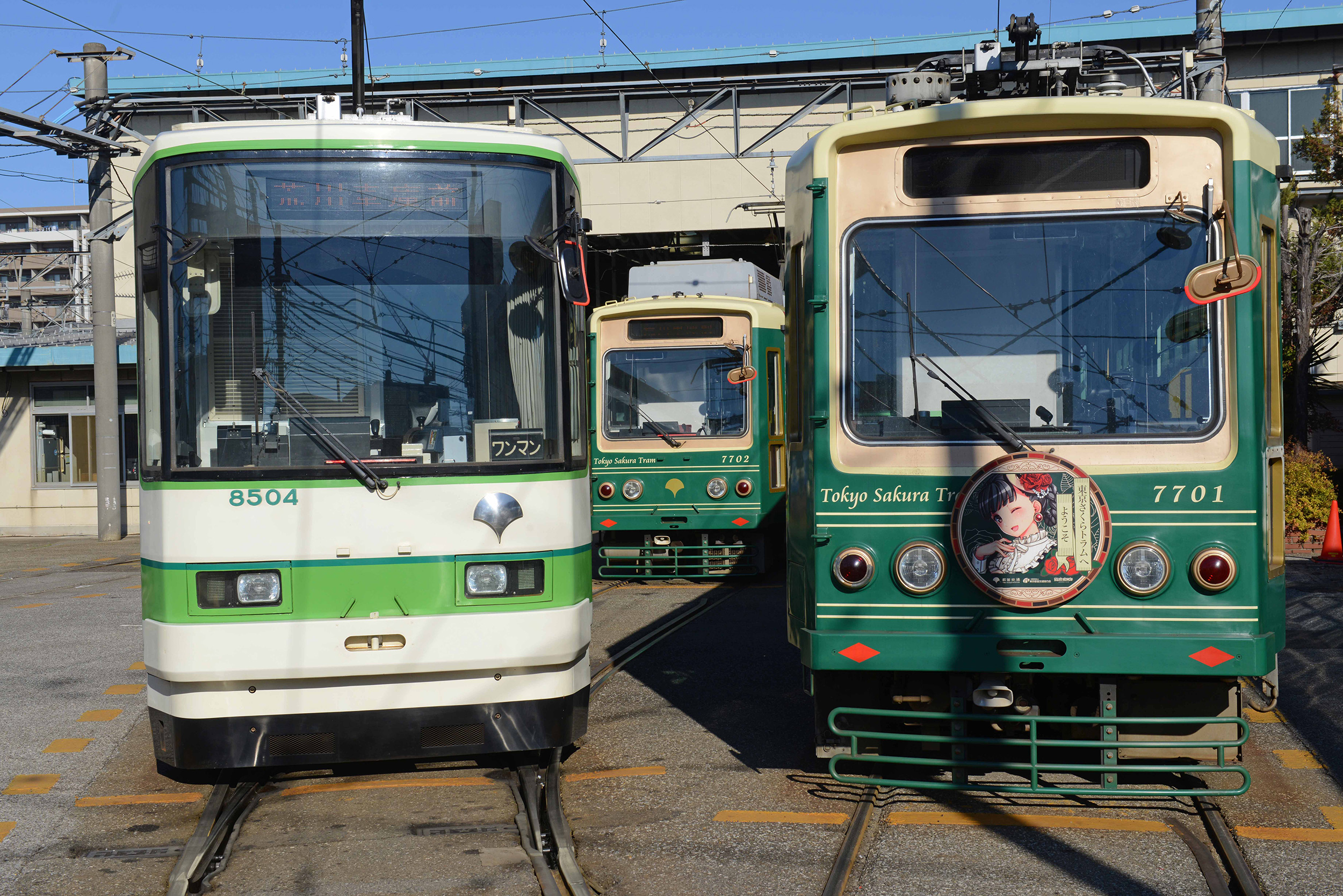
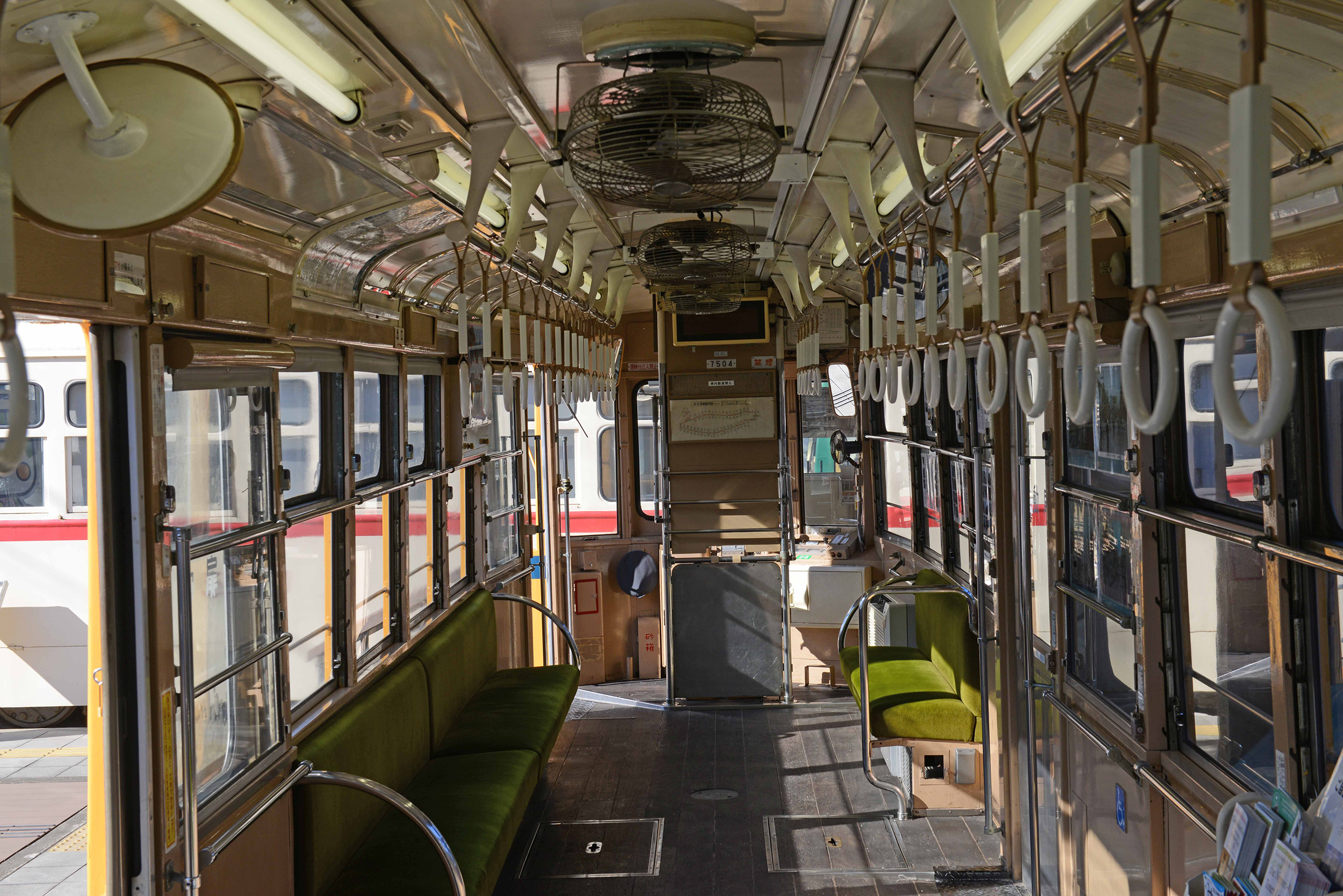
Tramcars may be associated with nostalgia, a creaking, slow life form of transport, but it’s worth noting the efficiency of the system. Although tramcars were purportedly phased out in order to make way for more efficient modes of transport, the Arakawa Line completes its entire 12-kilometer course from Waseda to Minowabashi in 40 minutes, irrespective of rush-hour traffic and the inevitable delays cars and buses are subject to.
Perhaps the last word on the subject should go to Ryosuke Kami, who, in his engaging 1992 guide, Tokyo Sights and Insights, wrote: “The line is testimony that the institutional vandalism that eliminates public transportation from a living city can be stopped.”
Stephen Mansfield is a Japan-based writer and photographer, whose work has appeared in over 60 magazines, newspapers and journals worldwide. He is the author of 20 books.

